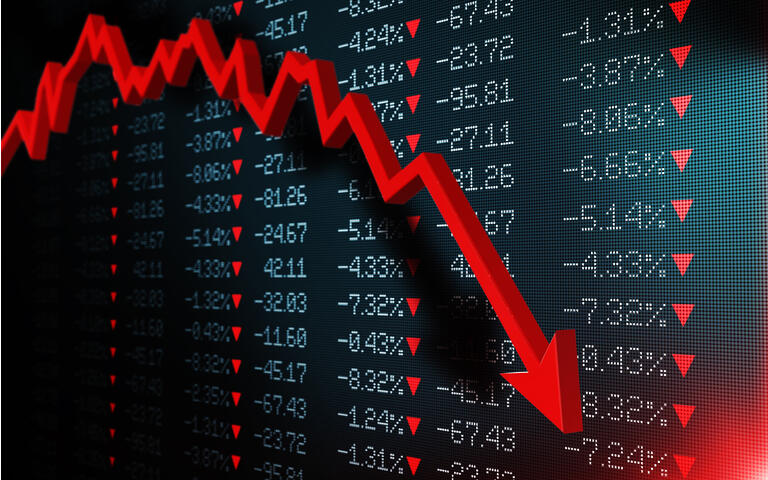
Will there be a stock market crash in 2022? Most of Wall Street doesn’t think so, but short sellers are certainly betting on it.
Short interest in the S&P 500 grew by 11 basis points from 2.09% to 2.2% between the end of last year and mid-March, the latest data from S&P Global Market Intelligence reflected. Bets against stocks across every sector in the benchmark except for financials grew by meaningful amounts during the period as the index corrected from all-time highs earlier in the year.
Wagers against consumer discretionary stocks registered the biggest jump, up 74 basis points to 5.24% during the three month period. The rise in short positions came as consistently higher monthly inflation prints pressured demand for goods.
The energy sector followed, logging a jump of 72 basis points to reach 3.91% in mid-March — the highest level since October 2020 — as investors bet skyrocketing oil prices were unlikely to last.
Meanwhile, financials saw the smallest increase of any sector, up a mere 9 basis points as the banking industry stands to benefit from interest rate hikes by the Federal Reserve this year and next.
S&P’s report comes as investors nervously watch a key indicator that the market may be in for a downturn. The most closely watched part of the yield is flattening and briefly inverted Tuesday in a phenomenon that has a historical track record of predicting recessions, an economic contraction that typically sees stock prices plummet.
While this may be a hoorah for short sellers, their bets on a crash appear unlikely to pay off just yet.
Deutsche Bank pointed out in a note that the market continued to rally after the curve inflected in all six of the cases since 1978 that an inversion occurred. On average, the S&P 500 returned over 19% from the day of the curve inflection to its next peak, and it took three to five months to reach that peak.
The rise in short interest makes sense. Investors have weathered a turbulent start to the year wrought by war in Eastern Europe, 40-year high inflation, supply chain snafus and interest rate increases from the Federal Reserve. The headwinds were enough to drag the S&P 500 into a correction, commonly referred to as a drop of more than 10%.
Still, despite a stomach-churning start to 2022 the S&P 500 has rebounded 11% from its lowest level of the year in early March as of Tuesday’s close and is just 4% shy of notching a new all-time high. Moreover, the momentum is likely to continue — at least for now, as investors turn the page on March and head into a new month.
“The good news is stocks really appear to love April,” LPL Financial chief market strategist Ryan Detrick said in a note, pointing out the month has closed green every year since 2006 except for 2012. “Not only is it the best month on average since 1950, but it has also been higher an incredible 15 of the past 16 years as well.”























